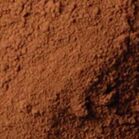|
A few days ago, I borrowed a book titled Colour from the public library near my home. I was fascinated by the subtitle: How We See It and How We Use It, and decided to bring it back with me to read. A particularly interesting chapter was the one on the development of pigments. It gave an overview of the different pigments used in Ancient Egypt, Ancient Rome, Medieval Europe, the Renaissance and right up to the present. It was really fascinating to imagine how paint was made by artists who lived thousands of years ago, and how these limited colour palettes, coupled with the different styles of drawing, help to distinguish and situate a piece of art in its time and place. For example, in Ancient Egypt, their main pigments were: Red, Orange, Yellow, Green, Blue, White and Black; whereas in Ancient Rome, there were Red, Yellow, Green, Blue, Purple, White and Black. The practical application of these for me as an artist would be to know that the orange hues which I see on an Ancient Roman piece are most probably a mix of Red, Yellow and White, and that I could limit my palette to these colours to emulate an Ancient Roman style of painting. Another interesting point covered in this chapter was how pigments got their names. I had always wondered about the fanciful names of paints when I was new to fine art and asked myself who was the one who came up with all these names and got everyone to agree to calling a particular brown burnt umber. Today I finally learnt that umber is a limonite with more than 5% of manganese oxide that makes it dark brown, and when heated, some of the limonite would dehydrate and convert to haematite. This gives a more reddish tinge to the umber, which is then called burnt umber. Now I know that one of my favourite colours truly lives up to its name and why I naturally use it whenever I have to paint scenes lit by candle flame. Here's a picture of burnt umber for you. More geeky posts about art to come soon. References:
Woolfson, M. M. (2016). Colour: How We See It and How We Use It. Singapore, World Scientific Publishing.
0 Comments
Hi, welcome to my website. This is a test post and also an announcement that the website has been successfully revamped! Stay tuned for blog posts about art and gilding. :)
|

 RSS Feed
RSS Feed